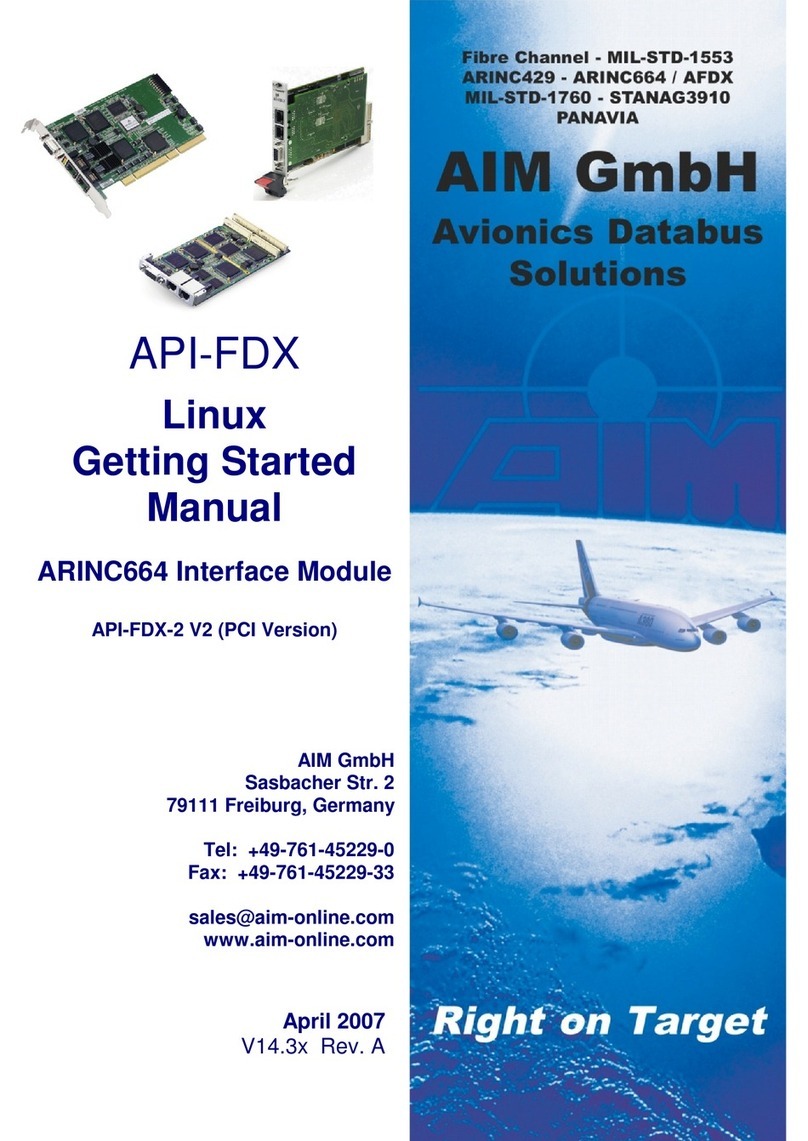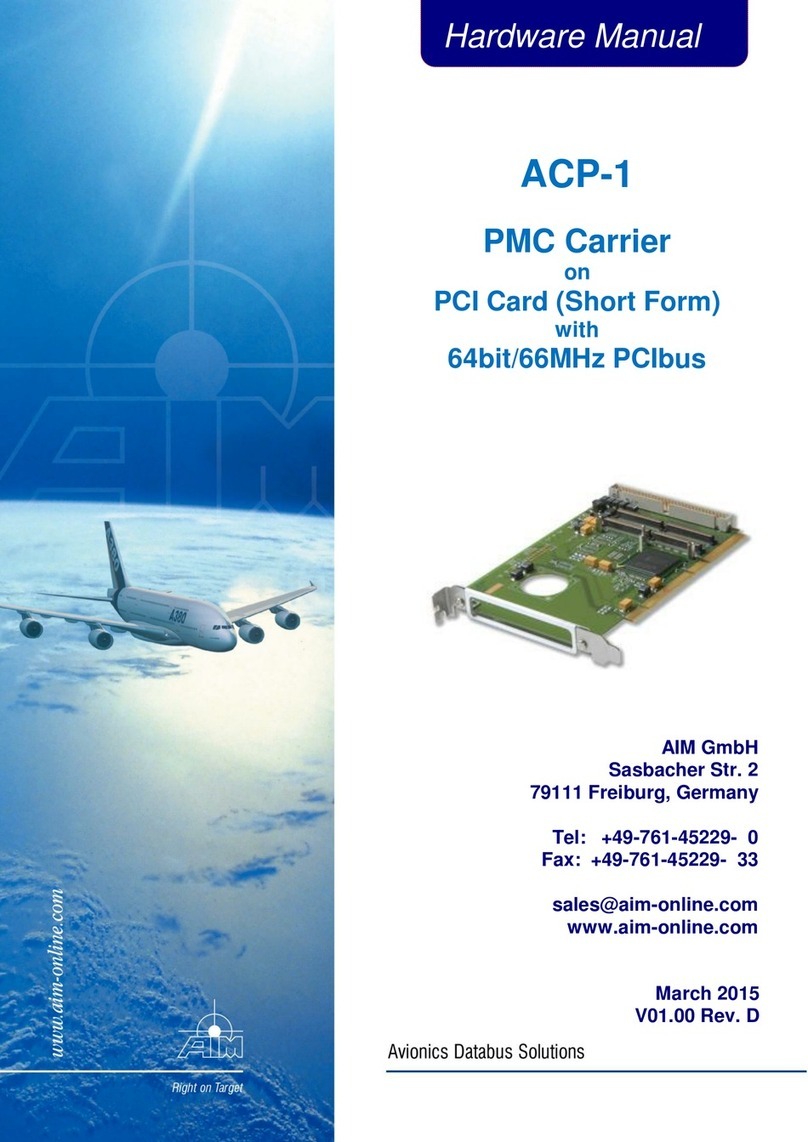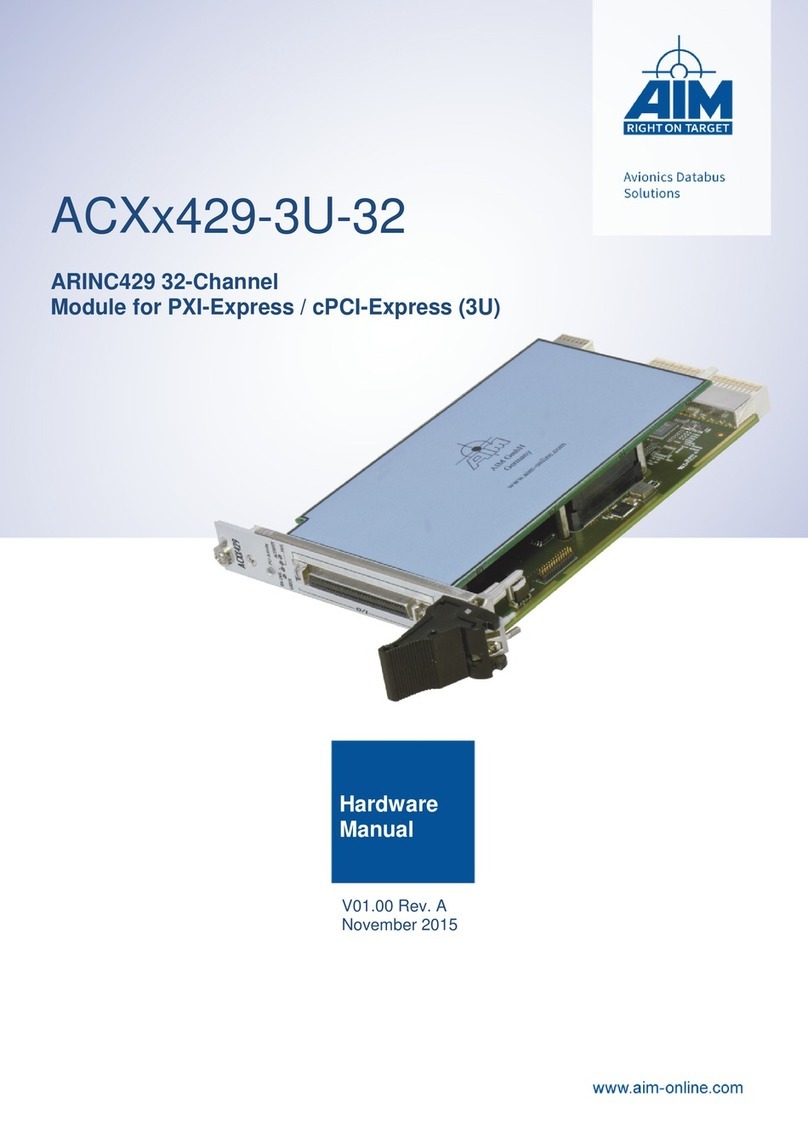
ACE1553-3U-4 Hardware Manual
TABLE OF CONTENTS
Section Title Page
1INTRODUCTION .....................................................................................................1
General ...............................................................................................................11.1 How This Manual is Organized............................................................................21.2
Applicable Documents.........................................................................................21.3
1.3.1 Industry Documents ........................................................................................2
1.3.2 Product Specific AIM Documents....................................................................2
2INSTALLATION.......................................................................................................3
Preparation and Precaution for Installation..........................................................3
2.1
Installation Instructions........................................................................................32.2 Connecting to other Devices................................................................................42.3
2.3.1 MIL-STD-1553-A/B Dual Channel Interface Connector ...................................5
2.3.2 General Purpose I/O Connections...................................................................5
Front Panel LEDs................................................................................................62.4
3STRUCTURE OF THE ACE1553-3U-4....................................................................7
PCI-Express Interface and BIU-I/O FPGA ...........................................................83.1
3.1.1 Global RAM Interface and Arbitration..............................................................8
3.1.2 Boot Function..................................................................................................8
3.1.3 Controller for SPI-Flash update programming .................................................8
3.1.4 MIL-STD-1553 Encoder ..................................................................................8
3.1.5 MIL-STD-1553 Decoder ..................................................................................8
3.1.6 IRIG-B Encoder/Decoder and Timecode Processor (TCP)..............................9
3.1.7 System & Maintenance Controller / RS232 Maintenance Interface..................9
3.1.8 External Trigger Inputs and Outputs................................................................9
3.1.9 User programmable Discrete I/O (GPIO).......................................................10
Global RAM.......................................................................................................113.2
BIU Section .......................................................................................................113.3 Physical Bus Interface with four Dual Redundant MIL-STD-1553B Channels....123.4 IRIG- and Time Code Section............................................................................143.5
3.5.1 Time Code Encoder/Decoder........................................................................14
3.5.2 Time Tag Methods ........................................................................................14
General Purpose Discrete Inputs/Outputs (GPIO) .............................................153.6 PXIe / cPCIe - Connector Pin Assignment.........................................................153.7
4PXI-EXPRESS INSTRUMENTATION BUS ...........................................................17
About the PXIe Standard...................................................................................17
4.1
4.1.1 Backplane Trigger Lines................................................................................18
4.1.2 System Reference Clock (10MHz) ................................................................20
4.1.3 Star Trigger...................................................................................................21
5TECHNICAL DATA ...............................................................................................23
6NOTES ..................................................................................................................27
Acronyms ..........................................................................................................276.1
































